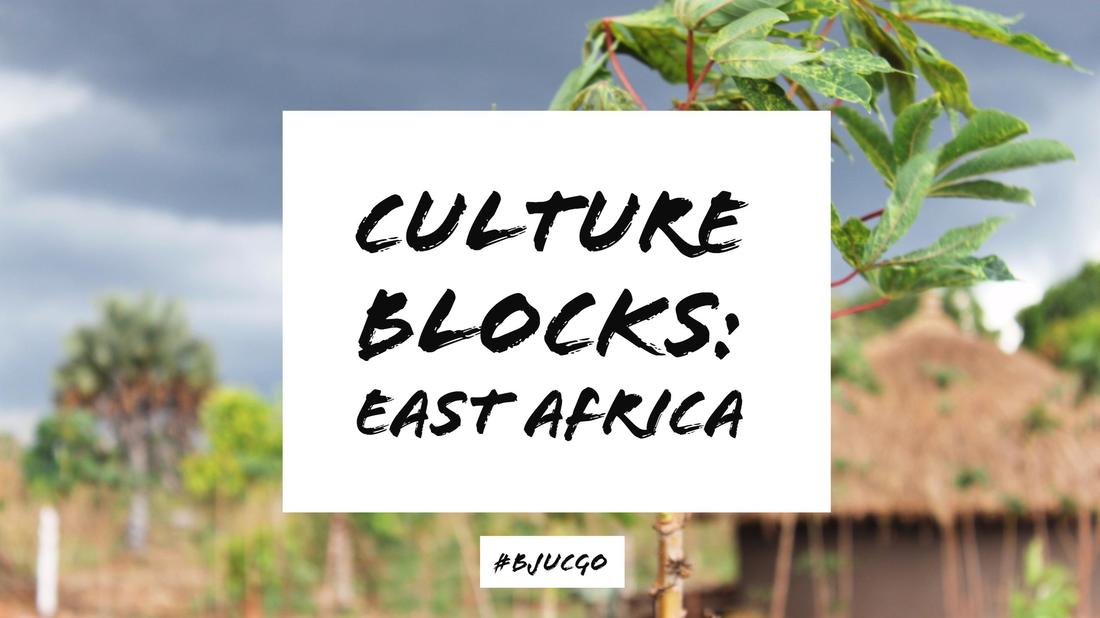Shadrach Nyeko, Graduate StudentWhen I first arrived on campus my freshman year, I was bombarded with a series of questions ranging from whether or not people wear clothes in Africa to whether there were lions hanging out in my backyard at home. Some people think that Africa is one big desert while others presume the whole place to be a rainforest. With all these misconceptions, Africa still remains one of the most stereotyped places in the world.
Many people in America have the idea that Africa is one massive country with no innovation or modern technology. That everyone is poor and disease ridden living in grass-thatched mud houses in the middle of nowhere. That there are wild animals everywhere and war is the norm – men carrying machine guns on the back of pickup trucks. While I will not take time to address all of them, these misconceptions seriously distort the understanding of African culture, and consequently skew our approach to discipleship (helping others follow Jesus) in this beautiful continent. Africa is a continent of vastness and variety. The fifty-four internationally-recognized countries harbor at least 3,000 ethnic groups who speak an equivalent number of languages. Each country consists of many tribal groups whose different cultures are expressed in their language, music and dance, arts and crafts, clothing, folk tales, food, and religion. And although there are many similarities between the cultures in a given country and even across national borders, my attempt to examine the cultures of this vast region is still more or less a generalization. Because I was born and raised in Uganda, I will only speak with reference to the three main East African countries – Uganda, Kenya, and Tanzania. One of the biggest drawbacks for those who have had a desire to minister in East Africa is the notion that Africa is not safe. The assumption is the whole continent is full of radical Muslims and rebel groups killing anyone who happens to be present. In actuality, however, approximately 80% of all Ugandans and Kenyans identify themselves as Christians and 9% as Muslims. “Christian” here is defined in the broadest sense. It’s only Tanzania where there is a significant measure of persecution that records 30% Christians and 30% Muslims. With the exception of a few radical Muslim groups in Tanzania, most of East Africa is safe and free of religious persecution. There are no active rebel groups or “hostile tribes.” Tropical diseases like malaria do exist but treatment is readily available for most people. East Africa may not be as safe as the United States, but safety is certainly not a valid excuse for refusing to minister there. For those who are already serving there, it’s good to be careful but you would be more effective approaching the people with love and confidence as opposed to fear and reservation. “… perfect love casteth out fear …” (1 John. 4:18). Another integral part of East African culture is hospitality. The African traditional society highly values relationships perhaps mainly because a person’s sense of identity resides more in the community than the individual. Whereas this trait is not unique to East Africans, effective discipleship recognizes relationships come before tasks in this part of the world. Elders are highly respected and the responsibility to take care of children belongs to everyone hence the saying “it takes a whole village to raise a child.” This means that when you approach the East African people with the Gospel, you might want to target entire families, and communities as a whole as opposed to individuals in isolation. In addition, the East African people are very expressive, and this aspect of our culture is more apparent in the music and dance, art and crafts, clothing, and language. Because this is so, the vigor and energy is not absent in the local churches. And for one coming from an American fundamental Baptist church, it may be easy to assume that the entire church in East Africa has succumbed to the extremes of the charismatic movement along with its health and wealth gospel. This preconception may cause undue criticism and therefore hinder effective discipleship. It is true that the church in Africa has been heavily influenced by the charismatic movement, but I believe it’s more important for those incoming to focus on Scripture – teaching doctrine. Bible schools, for that matter, are a huge need. “…Teaching them to observe all things whatsoever I have commanded you …” (Matthew 28:20). In conclusion of this unofficial incomprehensive compendium, something must be said about the effect of foreign influence on the culture of East Africa. There is an Acholi saying that goes like this: “opuk ma bedo inget bye doko kwa,” which means “the tortoise that lingers around an anthill will inevitably become brown.” Beginning from the time of colonialism, explorers and missionaries, all the way to the current era of entertainment and popular media through the internet and other means, no one society has remained the same. East Africa is not an exception. If you visit an average protestant church in any East African city today you’ll quickly find some of the songs sung are indeed English Western songs. Beyond that, people are always listening to music, watching movies, and reading books from the western side of the world. Therefore, one seeking to share the Gospel among East Africans, especially the younger educated folks, must realize that some their thinking has been heavily shaped by what they’ve seen in movies from the western world. Many a time these youth are heavily misguided in their thinking because they end up believing that life for everyone in the West is exactly like what they see in the movies. These notions of greener pastures on the other side have to be dispelled for the Gospel to take precedence. All in all, we are different but the same. The same sin struggles only manifest in different ways. We have the same enemy, and the same Savior – Jesus Christ, the Savior of all men. “…and, lo, I am with you alway, even unto the end of the world. Amen” (Matthew 28:20).
2 Comments
Matt WellsAs we continue our study of world cultures, let’s move across the world from Latin America to the Middle East.
If there’s one area of the world that Americans think they’re “experts” on, it’s the Middle East. As soon as some controversial event happens in this region, every American on Twitter and Facebook suddenly becomes a Middle Eastern scholar, waxing eloquent on what should have happened. Unfortunately, we have little knowledge of what it is actually like in this region or the sorrows its people face. None of us are experts. Including myself. And so it is with some hesitation that I take up the task of describing Middle Eastern culture. But as someone who has visited the region and consider some of its residents my good friends, I want to explain a little bit about the culture in hopes of providing better understanding. When we better understand a culture, we can better reach the people. Now, I want you to put aside everything you’ve heard on the evening talk shows, on Twitter, and from your favorite news site. Most of these organizations mean well in their pursuit of what they consider truth, but many of them end up oversimplifying the complicated geopolitics of the Middle East as they try to present the news from the region in an engaging way for Americans. Instead of viewing the Middle East from a political or economic mindset, let’s take a moment to consider its complications from the perspective of a believer – people who have been called to love the Middle East. I don’t mean necessarily to love the Middle East as a geographical area – though it certainly is a beautiful part of the world. Nor do I mean we must love every aspect of the culture, particularly the religion. However, we have been called to love its people – though in many ways, the region is full of enemies, both as a nation and as Christians. Why would we love such people? Because Christ loved us (1 John 4:19) – and He called us to a radical path of loving even our enemies (Matt. 5:44). How much must we love these people? Enough to make disciples of them (Matthew 28:19-20). But now we need another clarification – though the region does contain many dangerous forces, the people of the Middle East in general are not dangerous. The ones you see on the news waving black flags are radicals that must be stopped. But the average citizen of this region wants to live in peace. And many would love to be your friend. Now that we have those clarifications out of the way – and for this culture, many are required – let’s consider a few character traits of Middle Eastern culture:
I hope these characteristics are helpful for considering how we can reach this culture, whether by traveling there or by walking across the street to our neighbor from this culture. Invite them over. Prepare lots and lots of food (no pork though). Laugh with them and engage with them in passionate discussion about what you hold dear. Become their friend and watch how God works. Mark Vowels, CGO DirectorNOTE: This post starts a new series on the CGO Blog for the month of June. Each week's post will focus on a particular world culture. We will examine basic elements of the culture in order to better understand how to communicate the Gospel in that culture.
Alexander Dumas is quoted as saying, “All generalizations are dangerous, even this one.” Clearly, there are multiple cultures represented in the category Latin American, and any attempt to describe unifying features of people from the disparate countries that comprise Latin America will fall short – angering some, frustrating others and undoubtedly missing the mark completely in places. With that caveat in place, however, I want to consider some of the cultural characteristics of Latin American peoples with a goal of fostering more effective patterns of gospel communication among them. My qualifications for undertaking this task revolve around my eleven years of experience as a church planter and pastor of a Spanish language church in Tampa, Florida which was comprised of various nationalities from within Latin America. Additionally, I have enjoyed the blessings of nearly 34 years of marriage to my precious wife Cary, who is Cuban. I will observe three general characteristics of Hispanic peoples, which are by no means unique to them or necessarily lacking among other peoples of the world. These could be viewed as a sliding scale, being more or less true about different nationalities. Always keep in mind, too, that all people are individuals, so your contacts may have any combination of these dispositions or lack them entirely. First, most Hispanics are very relational. Relationships are valued above all else. Whereas some cultures prioritize completing tasks, Hispanics will often not be as concerned about the quantity of their accomplishments as they are about the quality of their interactions. Starting and ending times, completion of a to-do list or fulfilling imposed expectations may be secondary to good conversations which deepen a relationship. That means that you should be prepared to invest time in getting to know your Latin American acquaintances. How a person from this background feels about you is perhaps more important than what they know about you. If they trust you and like you they will be more likely to accept the truths which you hope to communicate. Next, Latinos are frequently immersed in religion as part of their cultural background. Roman Catholicism overwhelmingly predominates in Latin American countries. Without getting into a full discussion about the faults of Catholic doctrine, suffice it to say here that adherents to this religious system are taught to fulfill external rituals as a means of obtaining grace. For most Hispanics, Christianity is all about what you do in church, not so much about who you are as a person. So express your relationship with God through faith in Christ openly. Pray with and for your friend, showing that show that you actually know God in a personal way, not just as a concept taught in some catechism. Keep in mind that for many Hispanics, to be Latino is to be Catholic in the same way that to be Arab is to be Muslim or to be Indian is to be Hindu. Be cautious about criticizing Catholicism because it will be viewed as an attack on your friend’s very identity as a Hispanic. Again, be relational. Demonstrate that you have a living, grace-filled friendship with Jesus Christ. Finally, emphasizing once more the relational nature of Hispanic culture, most Latinos tend to be more group, or collectivist, oriented than some other cultures. Though this feature is not as strong as can be observed in many Asian cultures, Latin Americans will look to others among their friends or family for input when making important life decisions. I remember once presenting the Gospel to a sizable group of people that were all part of an extended family. When I finished I asked who would like to submit to Jesus as Savior. Nothing happened until the grandmother raised her hand, at which point every person in the room responded in the same way. My take-away from that experience is that those who are respected as leaders within a group have tremendous influence on others within the group. That means that you should not just befriend and develop a relationship with a Latino that you are targeting with the Gospel, but you should seek to get to know and become friends with his or her friends and family as well. The more we understand how people think and what motivates them, the more effectively we can reach them with the message of salvation. The Gospel message never varies, but how we communicate it should be affected by the culture and background of those to whom we speak. |
*If RSS feed is not working for you, please add it to your app or software manually by adding this url:
www.bjucgo.com/blog/feed The CGO BlogWritten by the CGO staff, with guest posts from students and other faculty/staff at BJU to provide thought leadership for missions in a new millennium. Categories
All
Archives
April 2022
|




 RSS Feed
RSS Feed
